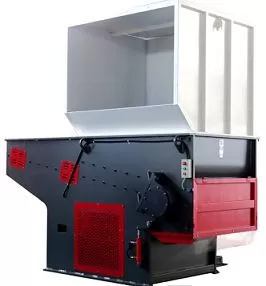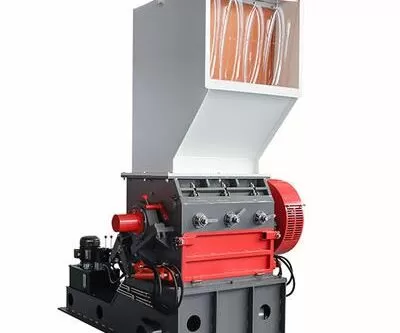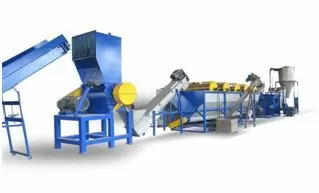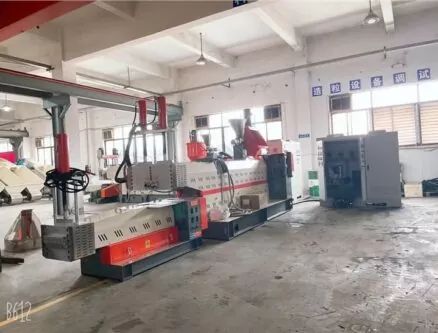Let’s face it — plastic waste is choking our planet. Landfills are full. Oceans are a mess. And the pressure to go green is building fast. That’s where I come in. I run Amige, and I live and breathe plastic recycling machines. But here’s the big question I get from people dipping their toes into this industry: Which machine actually does the recycling? It sounds simple, but it’s surprisingly complex — and fascinating.
The short answer? You need a combination of machines — like shredders, crushers, washers, dryers, and pelletizers — to complete the plastic recycling process from start to finish. No one machine does it all.
Now that we’ve crushed that question, stick around. I’ll walk you through the whole recycling line — step by step, machine by machine — with some wit, grit, and insider know-how.

What’s the first machine used for plastic recycling?
Let’s start at square one: size reduction.
When plastic waste enters your facility — whether it’s bottles, films, or rigid parts — it’s a chaotic mix of shapes and sizes. Enter the plastic shredder. This beast tears it all down to manageable flakes.
Shredders come in different flavors:
- Single-shaft shredders for uniform output.
- Double-shaft shredders when you want raw power over delicate finesse.
Once shredded, the plastic isn’t ready yet. Not even close.
What machine comes after shredding?
Time to move to crushing.
A plastic crusher or granulator takes those shredded flakes and grinds them even finer. Think of it as the espresso grinder after the coffee bean crack — precision is the name of the game.
Here’s why this matters:
- Finer particles = better washing.
- Uniform size = smoother processing later.
We use our own Amige heavy-duty crushers designed for PET, HDPE, PP, and more. They’re loud, proud, and very, very effective.
How do we clean the plastic flakes?
Dirty plastic is useless plastic.
That’s where washing machines come in. A full plastic recycling line includes:
- Friction washers
- Hot washers (soap and heat — plastic spa day)
- Rinsing tanks
Each step removes dirt, glue, oil, and labels. You’d be shocked how much gunk clings to used packaging.
Clean flakes = valuable flakes.

How do we dry plastic flakes after washing?
Nobody likes soggy flakes.
Once washed, plastic flakes need to be bone dry before further processing. For that, we use:
- Centrifugal dryers
- Thermal dryers
- Or even squeezer dryers for film plastic
These machines are crucial. Moisture causes trouble during extrusion. I always say: “Dry plastic is happy plastic.”
What’s the final machine in plastic recycling?
This is where it all comes together — the pelletizer.
Pelletizers melt, filter, and reformat cleaned flakes into uniform plastic pellets. These pellets? They’re pure gold in the recycling world — ready for injection molding, extrusion, or film blowing.
We usually pair pelletizers with:
- Extruders (single or twin screw)
- Melt filters
- Water ring or strand pellet cutting systems
Are there any machines for soft plastics and films?
Ah, yes — the wiggly devils.
Soft plastics like LDPE film are a nightmare without the right gear. You’ll want:
- Agglomerators to densify the film
- Squeezing machines to remove water
- And film extruders with venting systems
Soft plastics require finesse. Our Amige film washing and pelletizing line handles it like a charm
What about plastic bottle recycling machines?
Bottles (especially PET) are a beast of their own.
You’ll want:
- Label removers to strip off shrink sleeves
- Bottle crushers for pre-processing
- Floating tanks to separate caps (PP/HDPE) from bottles (PET)
Fun fact: PET sinks. HDPE floats. Nature’s way of helping us sort.

Can one machine do everything?
Ha! I wish.
Plastic recycling is like a symphony — each machine is an instrument. You need them to work in harmony.
Yes, there are all-in-one compact lines, but they still include multiple integrated machines. You’re better off customizing your setup based on the plastic type, input quality, and output goals.
What machine should I buy for plastic recycling?
Great question. It depends.
If you’re a beginner:
- Start with a crusher and basic washing system.
- Add a pelletizer later.
If you’re dealing with films:
- Get an agglomerator or squeezer.
- You’ll need precise drying too.
If you’re going industrial:
- Go full throttle with a customized recycling line from us at Amige. We’ll design it with you, not for you.
My best advice? Don’t just buy machines — buy solutions. And get support you can text at midnight. (Yes, I do that.)

Conclusion
No single machine handles all of plastic recycling — it’s a team effort. Shredders, crushers, washers, dryers, and pelletizers each play a vital role. Choose the right lineup, and you’ll turn trash into treasure. Simple as that.
